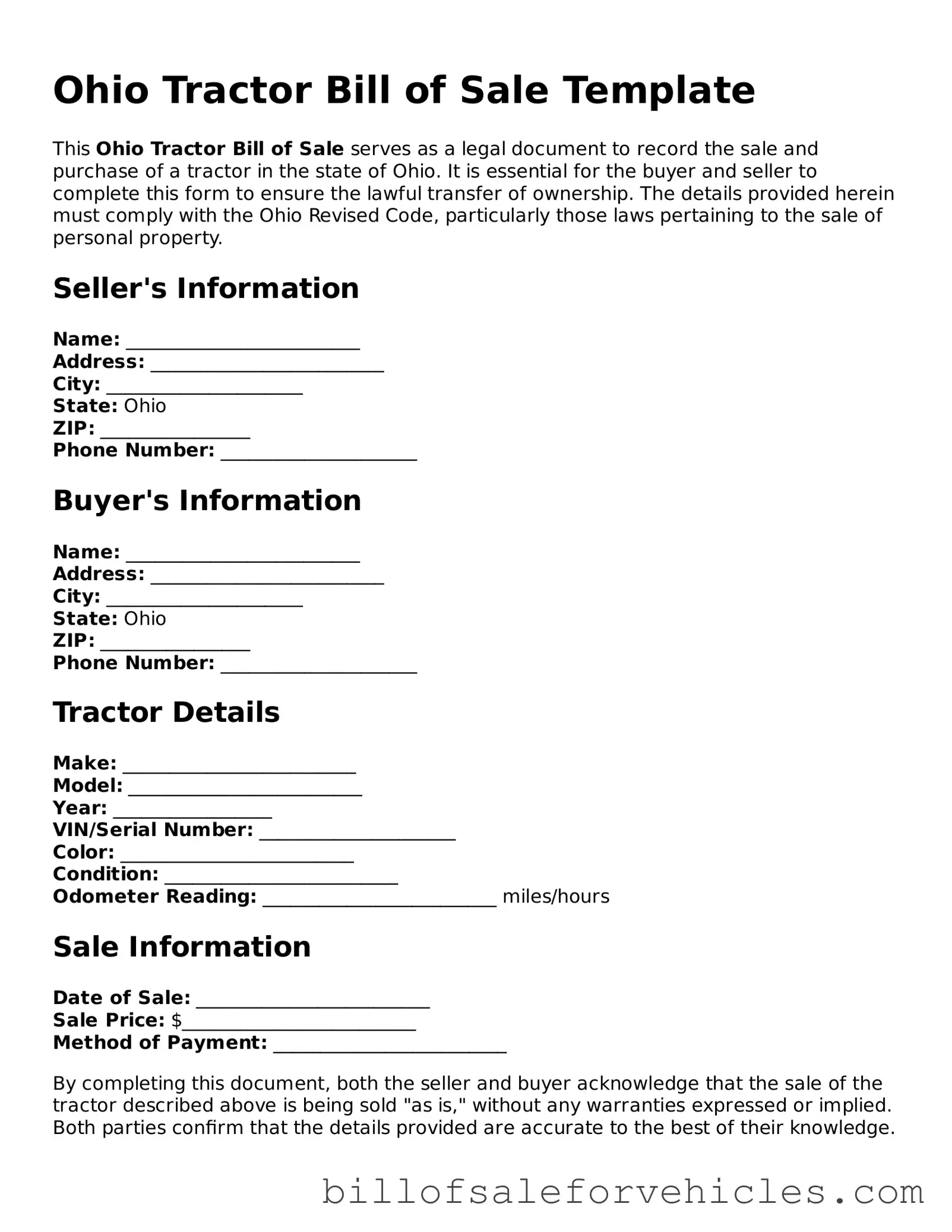What is an Ohio Tractor Bill of Sale form?
An Ohio Tractor Bill of Sale form is a legal document that records the details of a transaction between a seller and a buyer for the sale of a tractor in the state of Ohio. It serves as evidence that the buyer has purchased the tractor and now legally owns it. This document typically includes information about the buyer, seller, tractor (make, model, year, VIN), sale date, and the purchase price.
Is an Ohio Tractor Bill of Sale form required for private sales?
In many cases, while it may not be a legal requirement for private sales of tractors in Ohio, having a Bill of Sale is highly recommended. It provides a record of the transaction, which can be invaluable for tax reporting, proof of ownership, and as protection against potential legal disputes. It’s best to check with local authorities or a legal professional to understand the specifics of your situation.
What information do I need to include in an Ohio Tractor Bill of Sale form?
The form should include the full names and contact information of both the buyer and the seller, a detailed description of the tractor (including make, model, year, and VIN), the sale date, the sale amount, and signatures from both parties. Some forms may also ask for notarization or additional details about the condition of the tractor.
Do both parties need to sign the Ohio Tractor Bill of Sale form?
Yes, for the document to serve as a valid record of the transaction, both the seller and the buyer must sign the form. It is also a good practice to make copies of the signed document for both parties to keep.
How can I obtain an Ohio Tractor Bill of Sale form?
Ohio Tractor Bill of Sale forms can often be downloaded from local government websites or legal document providers online. It is important to ensure any form you use meets the Ohio state requirements. Alternatively, you may choose to draft one specifically for your transaction with the assistance of a legal professional.
What happens if I lose my Ohio Tractor Bill of Sale?
If you lose your Bill of Sale, it is advised to contact the other party involved in the transaction for a copy. If that’s not possible, drafting a new document that mirrors the original transaction and having both parties sign it again can serve as a substitute. It is crucial to keep this document in a safe place for future reference.
Is notarization required for an Ohio Tractor Bill of Sale?
While not always legally required, notarizing the document can add an extra layer of authenticity and may be beneficial for record-keeping and legal purposes. It’s advisable to consult with a legal professional or local authority to determine the necessity based on your specific circumstances.
Can an Ohio Tractor Bill of Sale be used for tax purposes?
Yes, an Ohio Tractor Bill of Sale can be used for tax purposes, such as reporting state sales tax. It serves as a receipt for the transaction that can support deductions and valuations. Always consult with a tax professional to understand how your tractor sale might affect your tax situation.
What should I do after completing the Ohio Tractor Bill of Sale?
After completing the Bill of Sale, both parties should keep a copy of the document for their records. The buyer may need to present this document for registration, insurance purposes, or during tax season. It's also a good practice to check if there are any additional steps required by local laws or regulations following the sale of a tractor.
